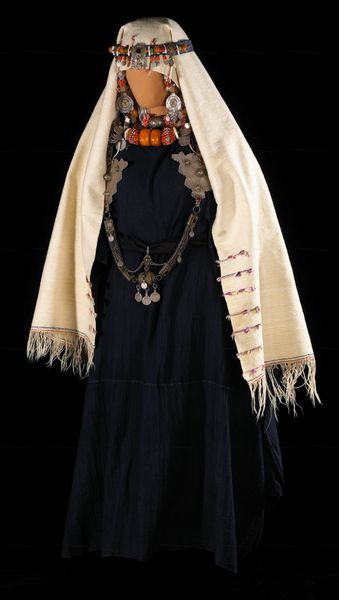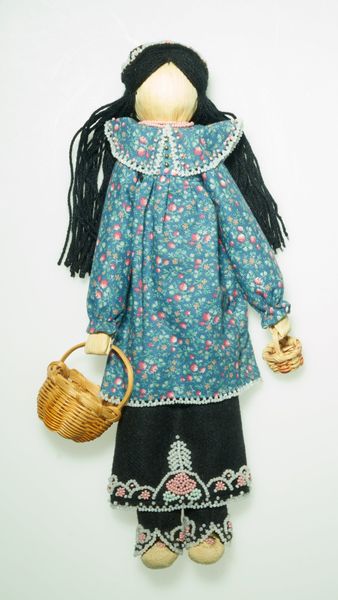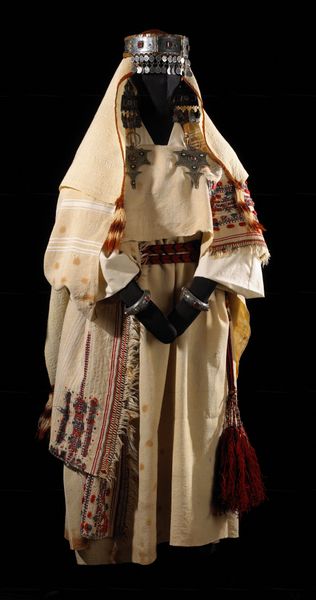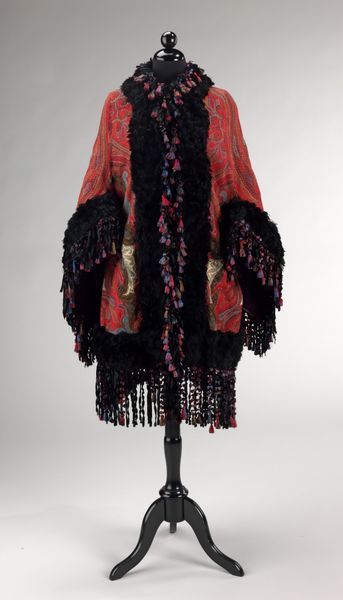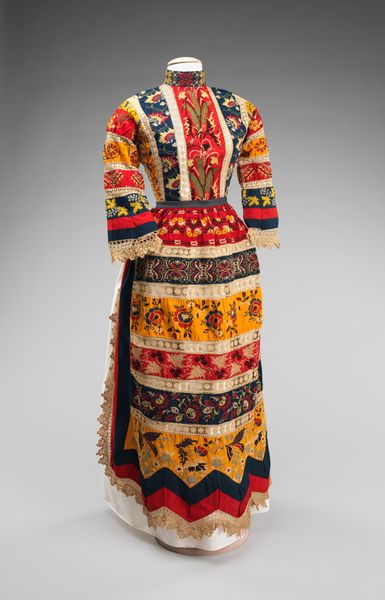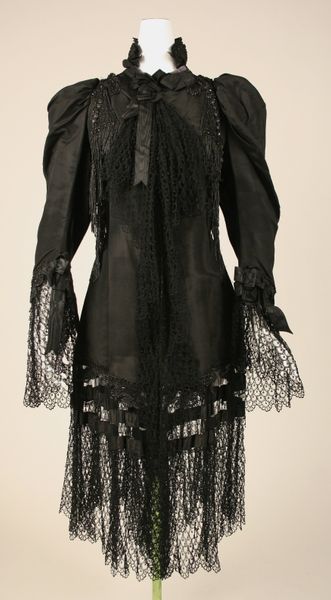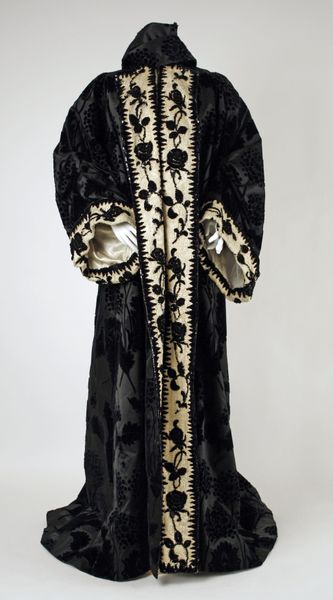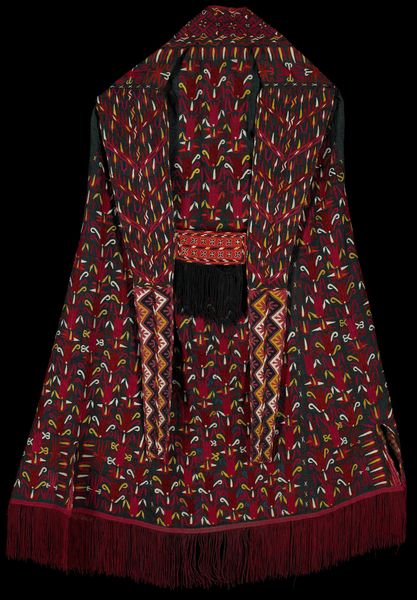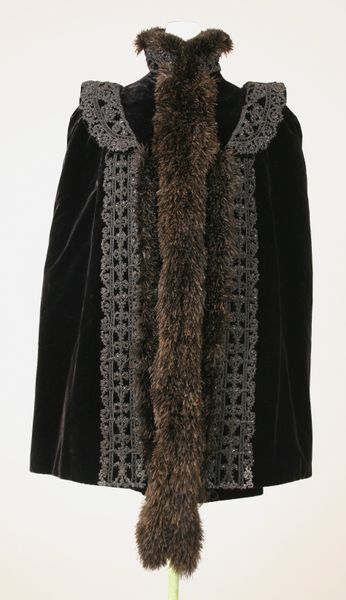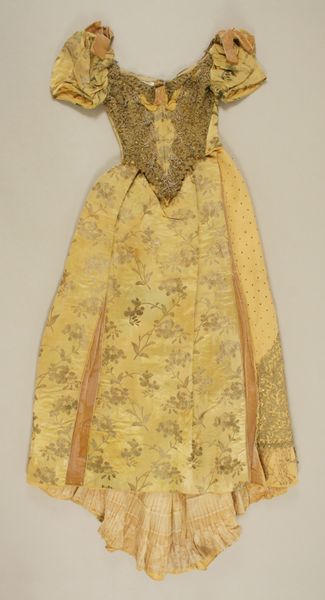
Fibulae (tizerzai) late 19th-early 20th century
0:00
0:00
fibre-art, silver, textile, enamel
#
fibre-art
#
silver
#
textile
#
traditional dress
#
enamel
#
beaded
#
coin
#
ethnic design
Dimensions: 21 x 6 1/2 in. (53.34 x 16.51 cm) (each element)
Copyright: Public Domain
These Fibulae, or Tizerzai, were created by an Ida ou Semlal Amazigh artist. These pieces present a striking composition through their play of textures and materials. We see a juxtaposition of the coarse fabric of the shawl, against the refined metalwork of the jewelry, and the smoothness of the amber beads. The linear arrangement of the metal elements creates a visual rhythm, drawing the eye from the headpiece down to the waist. This assemblage of objects transcends mere adornment; each element is a signifier within a complex cultural code. The use of amber, silver, and specific geometric motifs may reflect status, identity, and perhaps even spiritual beliefs. The artist seems to use these materials to create a dialogue between tradition and individual expression. Consider the contrast between the geometric exactness of the metalwork and the organic forms of the amber. This contrast invites us to contemplate how such objects function not only aesthetically but also as carriers of cultural memory and philosophical meaning.
Comments
minneapolisinstituteofart about 2 years ago
⋮
Berber women in southwestern Morocco wore massive triangular brooches with a pin and clasp to fasten draped garments at their shoulders. Pointed items like these pins are shown popping and bursting the evil eye in North African mosaics from the Roman period. But besides its protective function, this jewelry promoted female fertility, as symbolized by the silver enameled egg attached to the decorative band connecting the brooches.
Join the conversation
Join millions of artists and users on Artera today and experience the ultimate creative platform.
